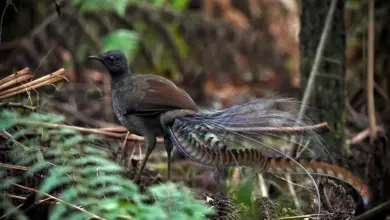Songar Tit (Poecile songarus)
The Songar Tits (Poecile songarus, formerly Parus songarus) is a passerine bird in the tit family. It is the southern counterpart of the Willow Tit P. montanus, and is often included in it as a subspecies.
Distribution / Range
It breeds in the deciduous mountain forests of southeast Kazakhstan, Kyrgyzstan and northern China.
Description
The 13 cm long Songar Tits has a dark brown cap, blackish bib, rich brown upperparts, white cheeks and cinnamon buff underparts. Males and females look alike, but juveniles are somewhat duller.
Calls / Vocalizations
The most common call is a nasal zee, zee, zee, but the notes of the bird evidently vary considerably
Nesting / Breeding
The Songar Tits usually excavates its own nesting hole, often in a rotten stump or in a tree, more or less decayed. Most nests examined are cups of felted material, such as fur, hair and wood chips, but feathers are sometimes used. The number of eggs is from five to six, white with small reddish spots or blotches.
Diet / Feeding
They feed on caterpillars, insects and seeds, much like other tits.
Taxonomy
There are four subspecies (Harrap and Quinn 1996):
- Poecile songarus songarus (Severtsov, 1873). Tian Shan mountains.Poecile songarus affinis (Przevalski, 1876). North-central China.Poecile songarus stoetzneri (O. Kleinschmidt, 1921). Northeastern China.Poecile songarus weigoldicus (O. Kleinschmidt, 1921). Southwestern China.
Of these, recent genetic evidence suggests that the first three are best included in P. montanus, with only the last being genetically distinct (del Hoyo et al. 2007).
References
- Del Hoyo, J., Elliot, A., and Christie D. (eds). (2007). Handbook of the Birds of the World. Volume 12: Picathartes to Tits and Chickadees. Lynx Edicions. ISBN 9788496553422
- Harrap, S., and Quinn, D. (1996). Tits, Nuthatches and Treecreepers. Christopher Helm. ISBN 0-7136-3964-4



